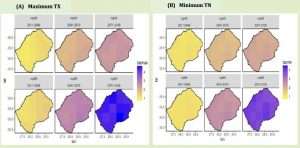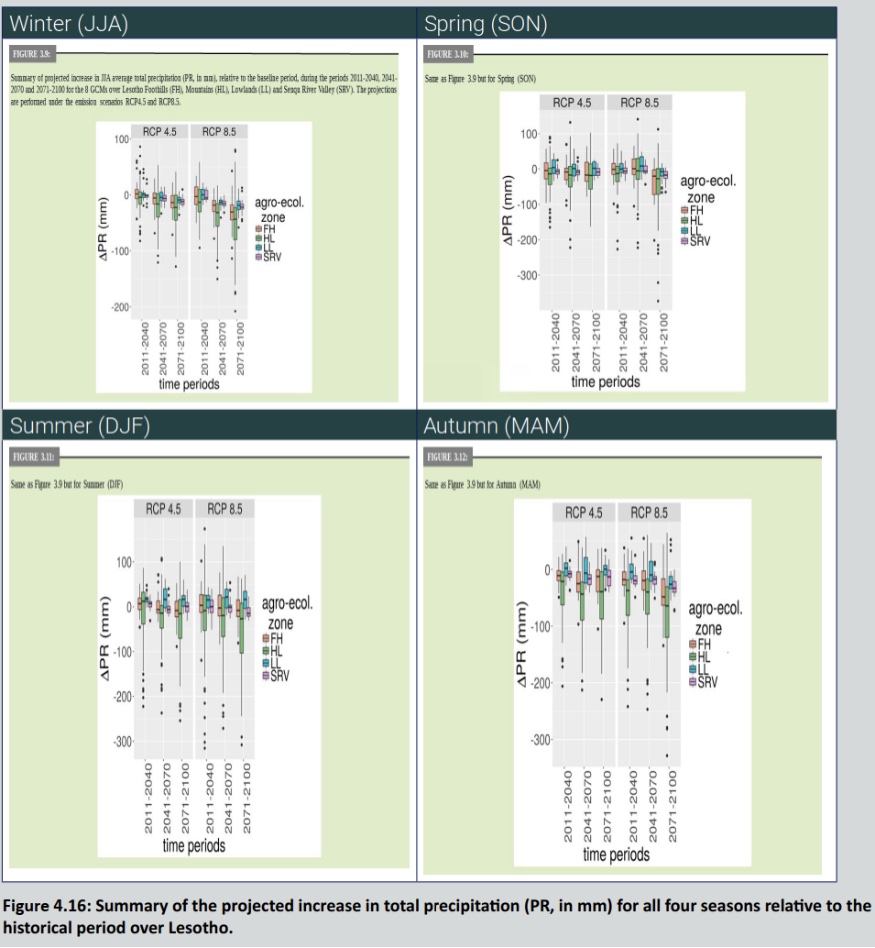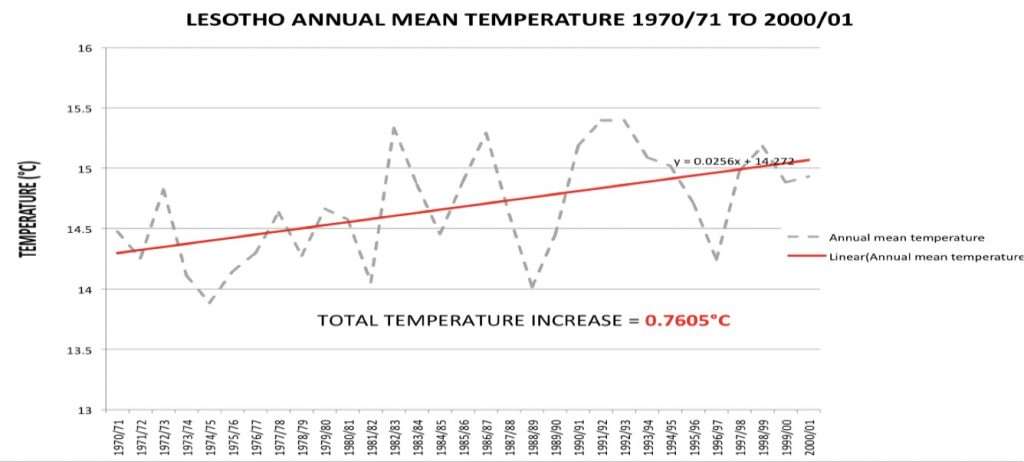Learn About
Lesotho Climate Projections
Climate of Lesotho
Lesotho experiences four distinct seasons – spring, summer, autumn, and winter – with significant temperature variations. During the summer season (DJF), mean temperatures range from 10.9°C to 27.6°C, with January being the hottest month. In winter (JJA), mean minimum temperatures vary from 0.1°C to 17.3°C, with July as the coldest month. However, it is noted that annual mean temperatures exhibit variability from year to year, with a noticeable upward trend.
Projected Temperatures

Climate change projections for Lesotho, like many other regions, are based on global climate models that estimate future changes in temperature, precipitation, and other climatic variables. Here are some general trends and projections for Lesotho. Generally, Lesotho is expected to experience a gradual increase in temperatures, consistent with global warming trends.
- Generally, Lesotho is expected to experience a gradual increase in temperatures during the 21st century (2011-2040, 2041-2070, and 2071-2100), consistent with global warming trends.
- In most seasons, both daytime (maximum) and nighttime (minimum) temperatures are expected to rise. For example, in the near future:
- Daytime temperatures could increase by more than 0.9°C in summer, autumn, and winter.
- Nighttime temperatures could increase by 1.2°C to 3.04°C, depending on the region.
- The highest increase in nighttime temperatures is expected in spring.
- The increase in spring temperatures suggests the possibility of an early onset of summer.
- Nighttime temperatures are warming as much as daytime temperatures in all seasons except winter.
- In winter, nighttime temperatures increase less, around 0.68°C in the near future.
- The warming trend becomes more significant in the mid and far future, especially under the emission scenario RCP8.5.
Projected Precipitation

The Mountains, Foothills, and Senqu River Valley are projected to get drier in the autumn season relative to the baseline period (see Figure 4.16 below). The signal of change is inconclusive for the other seasons but winter. In winter, dry conditions are projected by all ensemble members towards the end of the 21st century. Slightly different conditions to those of the rest of the agroecological zones are projected for the Lowlands with all ensemble members suggesting wetter conditions relative to the reference period during the summer months. The signal of average precipitation change suggested by the ensemble members, in the Lowlands, is mixed. This is true for all the seasons, during all periods, except for winter in the far-future in which case the Lowlands are anticipated to get drier relative to the reference period. Despite the signal being inconclusive in spring and autumn, for the Lowlands, the model spread is relatively narrow during most of the periods. The ensemble medians change during most of the periods are almost at the overlap with the origin in which case the mixed signal could be interpreted as suggestive of no change in precipitation relative to the baseline period.
For full details on Lesotho’s climatic projections, please see the Third National Communications





